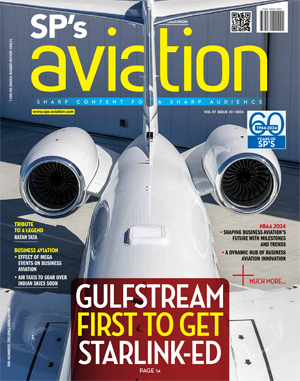INDIAN ARMED FORCES CHIEFS ON OUR RELENTLESS AND FOCUSED PUBLISHING EFFORTS

SP Guide Publications puts forth a well compiled articulation of issues, pursuits and accomplishments of the Indian Army, over the years

"Over the past 60 years, the growth of SP Guide Publications has mirrored the rising stature of Indian Navy. Its well-researched and informative magazines on Defence and Aerospace sector have served to shape an educated opinion of our military personnel, policy makers and the public alike. I wish SP's Publication team continued success, fair winds and following seas in all future endeavour!"

Since, its inception in 1964, SP Guide Publications has consistently demonstrated commitment to high-quality journalism in the aerospace and defence sectors, earning a well-deserved reputation as Asia's largest media house in this domain. I wish SP Guide Publications continued success in its pursuit of excellence.
BAE Signs Deal with HAL for 57 Jet Trainers

NEWS
On July 28, Hindustan Aeronautics Limited (HAL) signed an agreement with BAE Systems and Rolls-Royce for the supply of 57 Hawk trainer aircraft to India for Rs 5,082 crore (£700 million). While BAE’s business with HAL would be worth £500 million, Rolls-Royce’s business would be £200 million. The announcement came during the two-day visit by a UK delegation headed by the British Prime Minister, David Cameron to India. “This is an outstanding example of India-UK defence and industrial partnership and this agreement will bring significant economic benefits to both countries,” Cameron said. The aircraft will be manufactured at HAL’s facilities in Bengaluru.
VIEWS
While the decision to go in for additional Hawk advanced jet trainers (AJTs) may prove to be a wise one in the long run, its suddenness has surprised many a defence analyst in the country. Perhaps it needed to coincide with the maiden visit of the newly elected British Prime Minister David Cameron, as the British side was desperate to show some dramatic results for the visiting dignitary.
The induction of the AJTs into the Indian Air Force (IAF) has itself been a long and tortuous process. Since it was advocated for procurement way back in 1984 by the La Fontaine’s Committee’, which was looking into ways and means to improve pilot training and flight safety in the IAF, it took 20 long years for India to finally select the BAE Hawk in 2004 as its future AJT. The 66-plane order was worth about $1.2 billion (Rs 8,000 crore) and included options for another 40 aircraft. As per the contract, the first 24 Hawk Mk 132 AJTs were delivered by BAE and another 42 were to be licence-manufactured by HAL in India.
The initial euphoria of the IAF, of finally moving on to a genuine, true-blood AJT from the makeshift MiG-21FL got a jolt when immediately after induction of the first batch it lost a plane in a take-off accident. This started a series of controversies ranging from the manufacturer trying to palm off old aircraft to lack of spares support resulting in poor serviceability and reduced availability of aircraft for the conduct of flying courses. It was not only the IAF which was miffed with the lack of product support; even HAL was badly affected in its production schedule because of various shortcomings in the equipment supplied by the OEM.
For example, the assembly jigs that were supplied did not meet the requirements. There was mismatch in the kits/components and there were defects in the major sub-assemblies like the wing spar, etc. As a result, HAL fell way behind in its production schedules. The supply of 42 Hawks by HAL was to start from 2007 and concluded in 2011. However, till March 2010, it was able to produce only 12 aircraft. The Indian defence establishment appeared to be so peeved with the OEM’s business practices in terms of fulfilling its part of the contract that it decided to forgo the option for a follow-on order for additional aircraft. Instead, as reported by the Indian media, another request for proposal (RFP) for the follow-on competition was thrown open to international firms for the additional aircraft. Disenchantment with the OEM even found expression in Parliament when Minister of State for Defence M.M. Pallam Raju commented adversely on the OEM’s tardy behaviour and lack of commitment.





